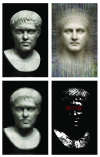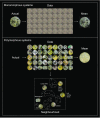Lost in translation
- PMID: 30210786
- PMCID: PMC6107997
- DOI: 10.12688/f1000research.15020.2
Lost in translation
Abstract
Translation in cognitive neuroscience remains beyond the horizon, brought no closer by supposed major advances in our understanding of the brain. Unless our explanatory models descend to the individual level-a cardinal requirement for any intervention-their real-world applications will always be limited. Drawing on an analysis of the informational properties of the brain, here we argue that adequate individualisation needs models of far greater dimensionality than has been usual in the field. This necessity arises from the widely distributed causality of neural systems, a consequence of the fundamentally adaptive nature of their developmental and physiological mechanisms. We discuss how recent advances in high-performance computing, combined with collections of large-scale data, enable the high-dimensional modelling we argue is critical to successful translation, and urge its adoption if the ultimate goal of impact on the lives of patients is to be achieved.
Keywords: Translation; causality; cognitive neuroscience; high-dimensional inference; machine learning.; neuroimaging.
Conflict of interest statement
No competing interests were disclosed.
Figures



References
Publication types
MeSH terms
Grants and funding
LinkOut - more resources
Full Text Sources
Other Literature Sources

